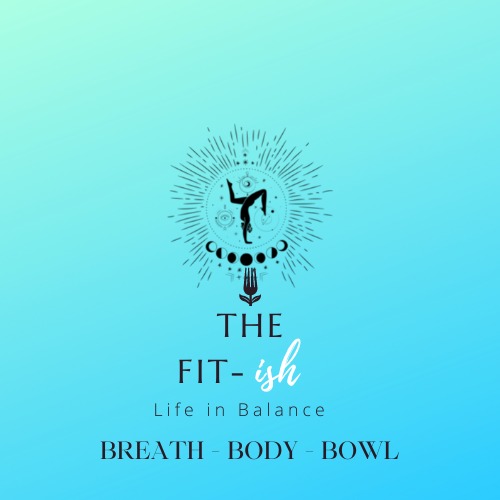Every person has a different idea of what constitutes “healthy food.” Of course, we all are different individuals and what works for one person doesn’t necessarily work for another. However, there are many nutritional controversies related to personal preferences, values, beliefs, and ongoing research.
Some nutritional controversies are related to specific foods, while others are related to levels of specific macronutrients. As you move forward in your health journey, it’s important to be open to seeing both sides of tricky topics in nutrition and honour the individuality of these topics.
Read on for an introduction to some common controversies, including specific foods and optimum macronutrient ratios. It’s important to understand current food controversies when exploring your own health and your family’s health.

1. DAIRY
What is it?
Dairy is produced from the milk of mammals, including cows, goats, and sheep, and can come in the form of milk, cheese, yogurt, and other substances. It contains carbohydrates, protein, and fat, though most of the carbs are filtered out when making foods like milk and yogurt.
Why the controversy?
Dairy is a staple of many diets, but some people don’t digest dairy well due to low levels of the lactase enzyme, which is required to digest lactose. The fact that it comes from animals may also influence whether people choose to eat it. Dairy might help build strong bones, combat certain cancers, provide relief from premenstrual symptoms, and support weight loss. However, for some, it can induce dietary distress, increase the risk of acne, raise the risk of certain cancers, and influence asthma and mucous levels. Some people are also concerned about additives, such as growth hormones.

2. SUGAR
What is it?
Composed of carbon, hydrogen, and oxygen, sugar is a type of carbohydrate that usually gives a sweetness to food. Sugars are found in many types of foods. Natural sugars may occur in foods such as fruits, while sugar may be added to baked goods and other processed foods. Sugars usually end in -ose, so look for words like sucrose, fructose, or glucose when reviewing labels.
Why the controversy?
Because sugar has been added to many foods and the human body is programmed to seek out sweetness, people may eat more sugar than the body needs. Some people blame sugar for the obesity crisis, as well as the rise in diabetes. Some believe that added sugars have a greater effect on the body than natural sugars, while others believe all sugars are harmful. However, sugar does provide energy from a biochemical standpoint. Not to mention, it can make food taste good.

3. SOY
What is it?
Soy is a popular ingredient derived from the soybean legume. It is a complete protein and is rich in calcium, iron, magnesium, fiber, and potassium.
Why the controversy?
Many people, especially vegans and vegetarians, use soy products to replace meat and/or dairy. While some soy products, like miso or tempeh, have very little processing, others are highly processed, like imitation meats and soy cheeses. The level of processing of certain soy products is one of the reasons that this is a controversial food. Another consideration is that the soy crop (much like corn and grains) is often genetically modified, which can cause concern for some.
In addition to the processing, soy contains a high level of isoflavones, a plant estrogen that works like a weaker human estrogen. While this may help reduce hot flashes and ward off breast and prostate cancers, there are also worries that it could actually cause cancer or thyroid problems. Studies are mixed on whether these benefits and issues occur.
However, besides the isoflavones, soy has B vitamins, fiber, potassium, and magnesium and is one of two types of complete plant proteins. This is the appeal for vegans and vegetarians who are looking to replace animal proteins in their diets.

4. GLUTEN
What is it?
Gluten is a protein found in wheat, barley, and rye that helps bind breads, pastas, and desserts to create a denser product.
Why the controversy?
There are three conditions for which a gluten-free lifestyle is necessary for people to maintain their health: celiac disease, gluten sensitivity, and wheat allergy. However, people who don’t experience these conditions may also feel the need to eliminate gluten. In fact, for some people, eliminating gluten actually addresses other health problems they may have, such as irritable bowel syndrome (IBS).
For those who cut gluten due to intolerances or sensitivities, there may be significant gains in health. Since gluten sensitivity can present as diarrhea, vomiting, or stomach pain, eliminating gluten helps eliminate these effects, increasing quality of life.
There may be health drawbacks for people hoping to benefit from cutting gluten without being gluten intolerant. These include a lower intake of fiber, iron, zinc, and potassium, therefore increasing the risk for nutritional deficiencies. Since gluten-free products also tend to be more expensive, those who eat reduced gluten may spend more for less.
In addition, a gluten-free diet may actually cause weight gain rather than weight loss, since gluten-free products tend to replace carbohydrates (which are four calories per gram) with fats (which are nine calories per gram).

5. MACRONUTRIENT CONTROVERSIES
One ongoing controversy is the optimal ratio of macronutrients (carbohydrate, protein, fat) in the diet. Government dietary guidelines typically suggest a ratio of 45%–65% carbohydrate, 10%–35% protein, and 20%–35% fat. However, popular diets range from high-carb to high-protein to high-fat.
Eliminating or severely reducing intake of one macronutrient works well for some people, while others focus less on macronutrient ratios. Research continues to show that, like other aspects of nutrition, macronutrient ratios varies for different people: There’s no one optimal ratio that works for everyone.
While reducing a particular macronutrient might work at one point, remember that needs shift over time, depending on factors like age, activity level, and lifestyle. Ultimately, it’s about learning what works best for you and supports your health in sustainable ways.

6. Carbohydrates
What are they?
Carbohydrates are made up of fibers and sugar. They give us usable energy, facilitate healthy digestion, and help support a healthy weight. They also enhance food flavor.
There are two types of carbs: Simple and Complex.
Simple carbohydrates provide quick energy through sugars, while Complex carbs slow digestion (through fiber) and take longer to be digested.
Many carbohydrates are also refined. Refined carbs usually have the fiber removed during processing, which can cause blood sugar to increase quickly.
What are the potential controversies?
Carbohydrates can have a negative reputation, which is reflected in many popular diets today. However, from a nutritional standpoint, not all carbs are created equal.
Many diets suggest significantly reducing carbohydrates or eliminating them altogether, but this is often due to the prevalence of refined and highly processed carbohydrates, as well as carbs high in sugar. There are clear benefits to reducing the amount of sugar and refined carbohydrates in the diet. For example, eating high amounts of sugar can increase the risk of diabetes, and eating excessive carbs may lead to potential weight gain, especially around the midsection.
However, the amount of sugar in different carbohydrates varies drastically, and some carbs contain valuable nutrients. For example, whole grains offer micronutrients and fiber, as do other foods that many people don’t necessarily consider part of the “carbohydrate” category: fruits, vegetables, and legumes.
The ideal ratio of carbohydrates is different for every individual. It’s all about finding what works best for you.

7. Fats
What are they?
Fats, also known as lipids, support proper brain development, provide cushioning and insulation to internal organs, and play a role in hormone synthesis. They help food taste better and keep us feeling fuller for longer periods of time.
What are the potential controversies?
When it comes to fats, the most common controversy is the ideal ratio in the diet. For a long time, low-fat diets were considered healthier than high-fat diets. One common belief was that consuming dietary fat would lead to weight gain, but this has flipped overall as higher-fat diets have gained popularity. However, the fear of fats still remains, and because it has more calories per gram than proteins and carbs, many people reduce fat consumption when trying to lose weight.
Another controversy relates to the types of fats. While trans fats are now generally recognized as unhealthy, and unsaturated fats are generally recognized as healthsupporting, the health value of saturated fats continues to be a topic of debate – and the research supports both sides. Still, most nutrition experts would suggest staying mindful of saturated fat intake overall.
Fats are essential for hormone regulation, brain function, and vitamin absorption, and including adequate amounts of fat in the diet may increase fertility and regulate mood. This may be why more traditional diets include a variety of fats.
As we continue to learn more about different types of fats and how they support health, it’s important to honour your individuality and get regular checkups with your doctor to make sure your dietary choices support your health.

8. Proteins
What are they?
Proteins are considered the building blocks of life – our skin, bones, muscles, hair, nails, and cartilage are all made mainly of protein. Proteins are made up of amino acids. Twenty of these are found in the human body; eleven of them can be synthesized. The other nine need to come from sources outside the body – these are the essential amino acids. There are two types of protein: complete and incomplete. Complete proteins contain all the essential amino acids.
What are the potential controversies?
As with carbs and fats, the most common controversy with proteins is the ideal ratio in the diet. The recommended daily allowance is 0.8 grams per kilogram of body weight. However, some experts believe that most people consume too much protein, while others believe that most people consume too little. Consuming too little or too much is linked with negative long-term health benefits, but research continues to explore what qualifies as “too little” or “too much.”
Another controversy is the protein source. Whether soy, gluten, or animal-based proteins, people include or choose to avoid a wide variety of protein sources. For example, some people swear by Paleo diets, while others have been vegan for many years. People have strong feelings about their protein choices, whether they stem from health concerns, environmental considerations, personal beliefs, or all three.
In addition, some people consume animal-based proteins because they’re complete proteins; most plant-based foods are incomplete proteins. However, eating a variety of plant proteins can provide all the essential amino acids.
Your ways of eating may change over your lifetime. It’s okay to introduce foods you’ve previously eliminated or eliminate foods you don’t feel are contributing to your health!
Individuality is key when deciding which “controversial” foods to maintain and which to avoid within your diet.
Hope you liked my blog. Feel free to connect with me if you have any comments or questions.
Thank you for reading my blog!!









